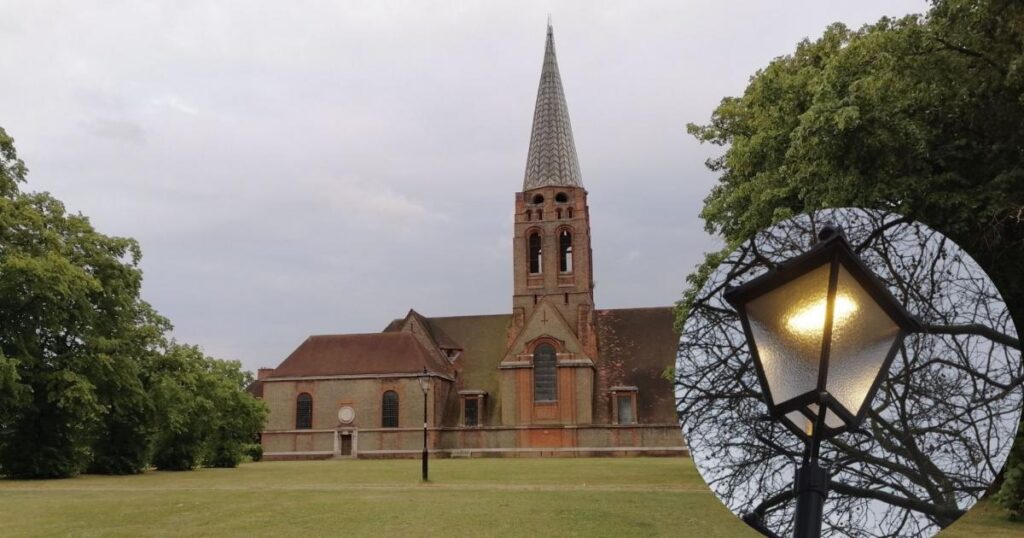There have been many theories about the real life inspiration for the iconic streetlight from The Lion The Witch and The Wardrobe – but could it have had its origins in north London?
Muswell Hill author Maureen Paton believes the lamppost which fired Narnia writer C.S Lewis’ imagination may have stood outside St Jude’s-on-the-Hill in Hampstead Garden Suburb.

She discovered that the Oxford don and renowned Christian thinker gave two layman’s sermons at St Jude’s during the war – on September 15, 1942 and three years later on April 15, 1945.
The Lion The Witch and The Wardrobe was published in 1950 and the idea of a possible connection has been welcomed as “exciting” by St Jude’s Vicar the Reverend Emily Kolltveit.

While past contenders for the Narnia lamp post have included Green Park, Belfast, Great Malvern, Durham, Oxford, Headington and even Watford, Maureen’s research led to some detective work in the Hampstead Garden Suburb Trust archives.
Head archivist Christine Rafferty has unearthed early Suburb plans from 1928 that show a solitary lamppost in front of flat Nos 3-18 South Square on the way to the church entrance, vestry and vicarage.
The view is from what is now the children’s garden.
“CS Lewis would have taken that route to the church to deliver his sermons,” points out Paton.
The Suburb’s pre-war lampposts were gas-lit and designed in the Edwardian style depicted in the artist Pauline Baynes’s original illustrations for The Lion, The Witch And The Wardrobe and its prequel, The Magician’s Nephew.
According to the suburb’s architectural support officer Alice Porter, they were recently replaced with models of the original lampposts in keeping with the suburb’s conservation rules.
The Mystery at Rake Hall reimagines Lewis as an accidental detective in 1947 Oxford solving a mystery surrounding a hostel for unmarried mothers.
Susan Temple, his brightest student, has hidden herself away at Rake Hall, a hostel for outcast mothers – and hasn’t been heard from since.
With no experience beyond catching the occasional student plagiarist, Lewis is hardly a detective. But when Susan’s absence continues to haunt him, he teams up with her concerned friend Lucy and they delve into the disturbing rumours of a nasty racket at Rake Hall.
It’s up to Lewis, a cloistered academic with a vivid imagination, to separate fact from fiction to find the truth.
Arts journalist turned author Maureen’s own mother lived at the real-life Rake Hall while pregnant with her, and the story inspired her to write the novel.
“I’ve long been intrigued by the parallel worlds of town and gown in Oxford and what might happen if they collided one day,” she says.
“I also wondered if England’s post-war crime wave had been an influence on the writings of CS Lewis, a very human and approachable kind of Christian who was always a favourite author of mine.
“The novel was sparked by my own personal story. Lewis was still at Magdalen College when my mother – who had moved to Oxford from London’s wartime bombs – became pregnant with me and was abandoned by her boyfriend with no family nearby.
“It wasn’t until after her death in 2001 that I discovered how she had to hide herself away at a very harsh time for single women. So, I decided to re-imagine Lewis as a sympathetic don-turned-detective who is drawn into this mystery at Rake Hall and puts himself in danger to do the right thing.”
C.S Lewis investigates: The Mystery at Rake Hall is published by Swift Press on April 10.




